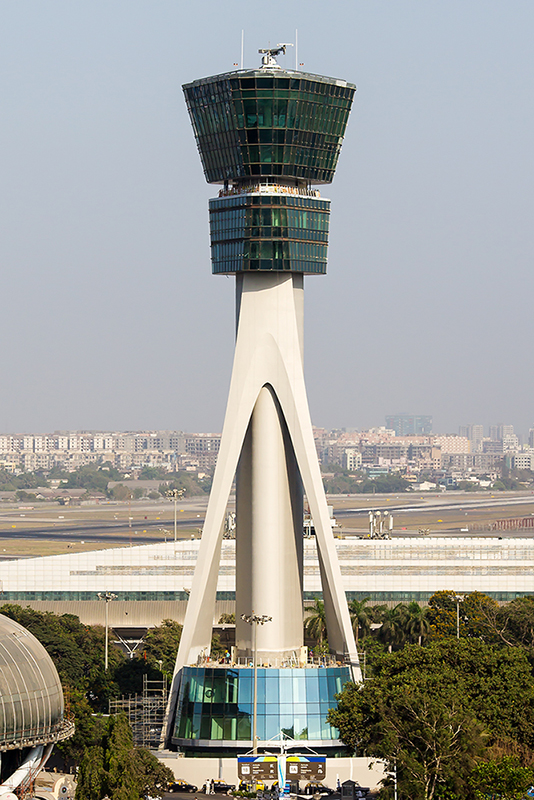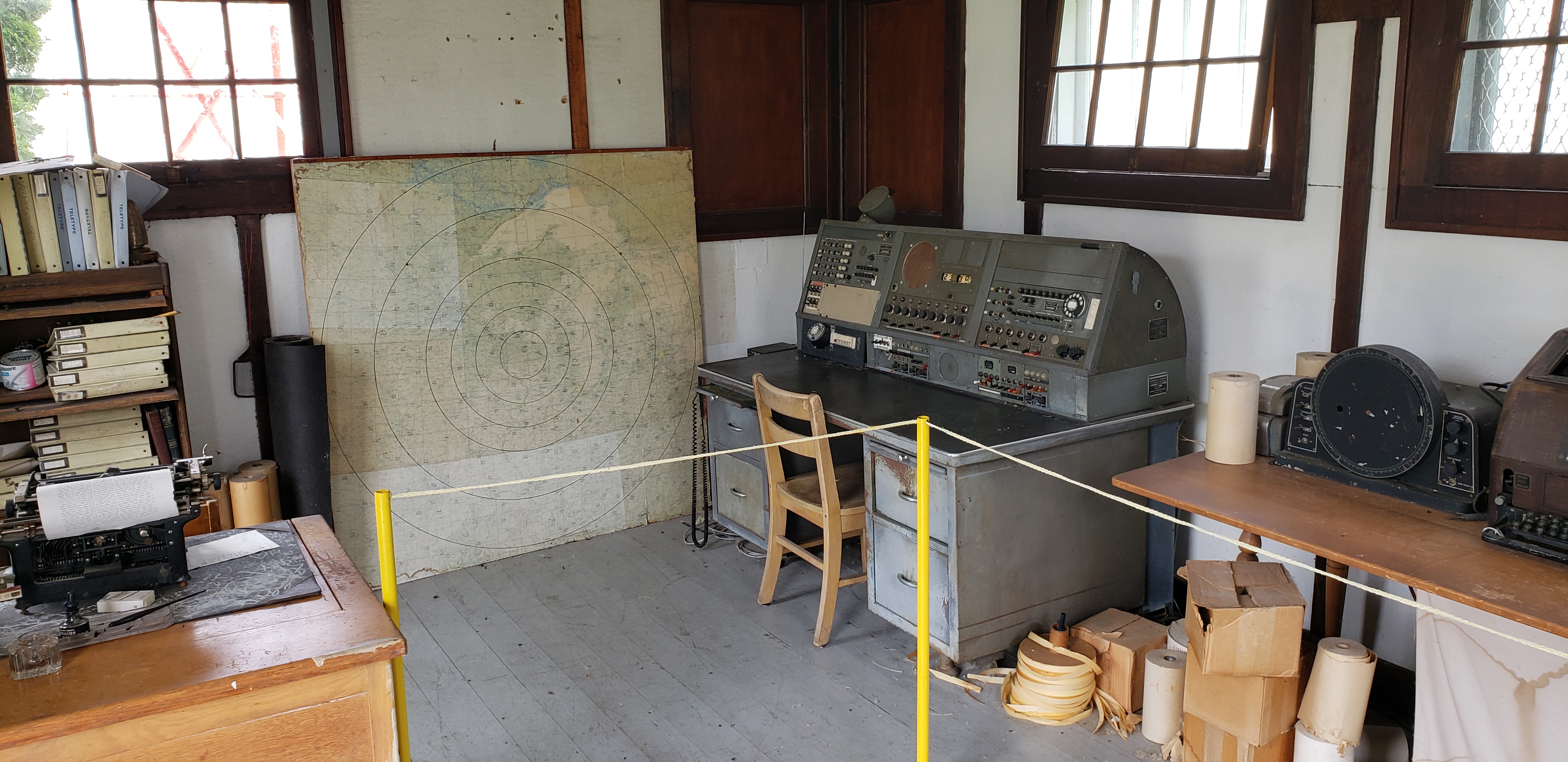|
Air Traffic
Air traffic control (ATC) is a service provided by ground-based air traffic controllers who direct aircraft on the ground and through a given section of controlled airspace, and can provide advisory services to aircraft in non-controlled airspace. The primary purpose of ATC is to prevent collisions, organise and expedite the flow of traffic in the air, and provide information and other support for pilots. Personnel of air traffic control monitor aircraft location in their assigned airspace by radar and communicate with the pilots by radio. To prevent collisions, ATC enforces traffic separation rules, which ensure each aircraft maintains a minimum amount of 'empty space' around it at all times. It is also common for ATC to provide services to all private, military, and commercial aircraft operating within its airspace; not just civilian aircraft. Depending on the type of flight and the class of airspace, ATC may issue ''instructions'' that pilots are required to obey, or ''a ... [...More Info...] [...Related Items...] OR: [Wikipedia] [Google] [Baidu] |
Airspace
Airspace is the portion of the atmosphere controlled by a country above its territory, including its territorial waters or, more generally, any specific three-dimensional portion of the atmosphere. It is not the same as outer space which is the expanse or space outside the Earth and aerospace which is the general term for Earth's atmosphere and the outer space within the planet's vicinity. Horizontal boundary By international law, a state "has complete and exclusive sovereignty over the airspace above its territory", which corresponds with the maritime definition of territorial waters as being 12 nautical miles (22.2 km) out from a nation's coastline. Airspace not within any country's territorial limit is considered international, analogous to the "high seas" in maritime law. However, a country may, by international agreement, assume responsibility for controlling parts of international airspace, such as those over the oceans. Such airspace in respect of which a countr ... [...More Info...] [...Related Items...] OR: [Wikipedia] [Google] [Baidu] |
Air Traffic Controller
An Air traffic controller (ATC) is a person responsible for the coordination of traffic in their assigned airspace. Typically stationed in area control centers or control towers, they monitor the position, speed, and altitude of aircraft and communicate with the pilots via radio. In addition, controllers ensure safe distances between the different aircraft. The profession is considered to be highly demanding and stressful due to the need for constant reorganization of cognitive processes, flexible adjustments and continuous decision-making, also often while under time pressure. Factors such as unfavorable work schedules, high responsibility and the reliability of equipment further influence workload and stress levels. Despite these challenges, the role offers competitive salaries and strong job security, which are often cited as key benefits. History Origins Air traffic controlling dates to the early 1920s in the United Kingdom (UK); the first Air traffic control, control ... [...More Info...] [...Related Items...] OR: [Wikipedia] [Google] [Baidu] |
International Civil Aviation Organization
The International Civil Aviation Organization (ICAO ) is a specialized agency of the United Nations that coordinates the principles and techniques of international air navigation, and fosters the planning and development of international scheduled air transport, air transport to ensure safe and orderly growth. The ICAO headquarters are located in the Quartier international de Montréal of Montreal, Quebec, Canada. The ICAO Council adopts standards and recommended practices concerning air navigation, its infrastructure, flight inspection, prevention of unlawful interference, and facilitation of border-crossing procedures for international civil aviation. ICAO defines the protocols for Aviation accidents and incidents, air accident investigation that are followed by :Organizations investigating aviation accidents and incidents, transport safety authorities in countries signatory to the Convention on International Civil Aviation. The Air Navigation Commission (ANC) is the techn ... [...More Info...] [...Related Items...] OR: [Wikipedia] [Google] [Baidu] |
Radio
Radio is the technology of communicating using radio waves. Radio waves are electromagnetic waves of frequency between 3 hertz (Hz) and 300 gigahertz (GHz). They are generated by an electronic device called a transmitter connected to an antenna which radiates the waves. They can be received by other antennas connected to a radio receiver; this is the fundamental principle of radio communication. In addition to communication, radio is used for radar, radio navigation, remote control, remote sensing, and other applications. In radio communication, used in radio and television broadcasting, cell phones, two-way radios, wireless networking, and satellite communication, among numerous other uses, radio waves are used to carry information across space from a transmitter to a receiver, by modulating the radio signal (impressing an information signal on the radio wave by varying some aspect of the wave) in the transmitter. In radar, used to locate and track ob ... [...More Info...] [...Related Items...] OR: [Wikipedia] [Google] [Baidu] |
Separation (air Traffic Control)
In air traffic control, separation is the name for the concept of keeping an aircraft outside a minimum distance from another aircraft to reduce the risk of those aircraft colliding, as well as prevent accidents due to secondary factors, such as wake turbulence. Separation can also apply to terrain, obstacles, and controlled airspace, wherein an aircraft must stay at a minimum distance from a block of airspace; as an example, all aircraft must be approved by the controller who "owns" the airspace before the aircraft is approved to enter that sector. Air traffic controllers apply rules, known as ''separation minima'', to do this. Pairs of aircraft to which these rules have been successfully applied are said to be ''separated'': the risk of these aircraft colliding is therefore remote. If separation is lost between two aircraft, they are said to be in a ''conflict''. When an aircraft passes behind or follows another aircraft, wake turbulence minima are applied due to the effe ... [...More Info...] [...Related Items...] OR: [Wikipedia] [Google] [Baidu] |
Flight Service Station
A flight service station (FSS) is an air traffic facility that provides information and services to aircraft pilots before, during, and after flights, but unlike air traffic control (ATC), is not responsible for giving instructions or clearances or providing separation. They do, however, relay clearances from ATC for departure or approaches. The people who communicate with pilots from an FSS are referred to as flight service specialists. The precise services offered by stations vary by country, but typical FSS services may include providing preflight briefings including weather and notices to airmen (NOTAMs); filing, opening, and closing flight plans; monitoring navigational aids (NAVAIDs); collecting and disseminating pilot reports (PIREPs) and airport surface weather observations; offering traffic advisories to aircraft on the ground or in flight; relaying instructions or clearances from air traffic control; relaying information from or about airborne aircraft to their home bas ... [...More Info...] [...Related Items...] OR: [Wikipedia] [Google] [Baidu] |
Federal Aviation Authority
The Federal Aviation Administration (FAA) is a U.S. federal government agency within the U.S. Department of Transportation that regulates civil aviation in the United States and surrounding international waters. Its powers include air traffic control, certification of personnel and aircraft, setting standards for airports, and protection of U.S. assets during the launch or re-entry of commercial space vehicles. Powers over neighboring international waters were delegated to the FAA by authority of the International Civil Aviation Organization. The FAA was created in as the Federal Aviation Agency, replacing the Civil Aeronautics Administration (CAA). In 1967, the FAA became part of the newly formed U.S. Department of Transportation and was renamed the Federal Aviation Administration. Major functions The FAA's roles include: *Regulating U.S. commercial space transportation *Regulating air navigation facilities' geometric and flight inspection standards *Encouraging and deve ... [...More Info...] [...Related Items...] OR: [Wikipedia] [Google] [Baidu] |
Single European Sky
The Single European Sky (SES) is a European Commission initiative that seeks to reform the European air traffic management system through a series of actions carried out in four different levels (institutional, operational, technological and control and supervision) with the aim of satisfying the needs of the European airspace in terms of capacity, safety, efficiency and environmental impact. Background Air traffic management in the European Union is currently undertaken by member states, co-operating through EUROCONTROL, an intergovernmental organisation that includes most of the European countries. European air spaces are some of the busiest in the world, and the current system of air traffic management allegedly suffers from several parameters, such as using national borders in the sky, and having large areas of airspace reserved for national military use when in fact they may not be needed. This has created 'an outdated patchwork of airspace blocs and inefficient flight pa ... [...More Info...] [...Related Items...] OR: [Wikipedia] [Google] [Baidu] |
The Economist
''The Economist'' is a British newspaper published weekly in printed magazine format and daily on Electronic publishing, digital platforms. It publishes stories on topics that include economics, business, geopolitics, technology and culture. Mostly written and edited in London, it has other editorial offices in the United States and in major cities in continental Europe, Asia, and the Middle East. The newspaper has a prominent focus on data journalism and interpretive analysis over News media, original reporting, to both criticism and acclaim. Founded in 1843, ''The Economist'' was first circulated by Scottish economist James Wilson (businessman), James Wilson to muster support for abolishing the British Corn Laws (1815–1846), a system of import tariffs. Over time, the newspaper's coverage expanded further into political economy and eventually began running articles on current events, finance, commerce, and British politics. Throughout the mid-to-late 20th century, it greatl ... [...More Info...] [...Related Items...] OR: [Wikipedia] [Google] [Baidu] |
Moscow
Moscow is the Capital city, capital and List of cities and towns in Russia by population, largest city of Russia, standing on the Moskva (river), Moskva River in Central Russia. It has a population estimated at over 13 million residents within the city limits, over 19.1 million residents in the urban area, and over 21.5 million residents in Moscow metropolitan area, its metropolitan area. The city covers an area of , while the urban area covers , and the metropolitan area covers over . Moscow is among the world's List of largest cities, largest cities, being the List of European cities by population within city limits, most populous city entirely in Europe, the largest List of urban areas in Europe, urban and List of metropolitan areas in Europe, metropolitan area in Europe, and the largest city by land area on the European continent. First documented in 1147, Moscow became the capital of the Grand Principality of Moscow, which led the unification of the Russian lan ... [...More Info...] [...Related Items...] OR: [Wikipedia] [Google] [Baidu] |
Irkutsk
Irkutsk ( ; rus, Иркутск, p=ɪrˈkutsk; Buryat language, Buryat and , ''Erhüü'', ) is the largest city and administrative center of Irkutsk Oblast, Russia. With a population of 587,891 Irkutsk is the List of cities and towns in Russia by population, 25th-largest city in Russia by population, the fifth-largest in the Siberian Federal District, and one of the largest types of inhabited localities in Russia, cities in Siberia. Located in the south of the eponymous oblast, the city proper lies on the Angara River, a tributary of the Yenisei River, Yenisei, about 850 kilometres (530 mi) to the south-east of Krasnoyarsk and about 520 kilometres (320 mi) north of Ulaanbaatar. The Trans-Siberian Highway (Federal M53 and M55 Highways) and Trans-Siberian Railway connect Irkutsk to other regions in Russia and Mongolia. Many distinguished Russians were sent into exile in Irkutsk for their part in the Decembrist revolt of 1825, and the city became an exile-post for the ... [...More Info...] [...Related Items...] OR: [Wikipedia] [Google] [Baidu] |









